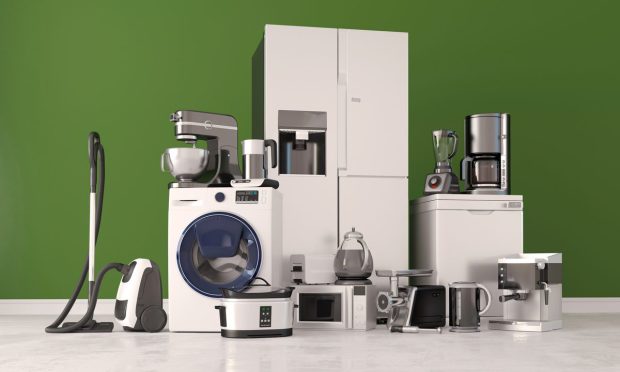No Pain, No Gain: Amazon and Walmart Fight for Electronics Share Stagnates

Amazon and Walmart have both seen their share of electronics and appliance sales remain relatively unchanged for the past two quarters, with Walmart struggling to make up any of the ground it lost in the past decade.
Looking at PYMNTS proprietary data, Amazon holds nearly a quarter of consumers’ electronics and appliance purchases as of the second quarter, about the same share it had at this point last year but a dip from the fourth quarter’s holiday shopping season. Walmart has just one-fifth of that, seeing just over 5% of electronic purchases as the company’s share continues its steady decline.

Source: PYMNTS data
In 2018, Amazon also surpassed Best Buy in consumer electronics sales, according to Dealerscope, a spot it still holds even as Best Buy and Apple have jostled over the second and third positions in the last several years. Walmart, Dealerscope says, is currently the fourth-largest consumer electronics retailer.
Read more: Amazon Finally Takes Top Spot In Consumer Electronics Sales
Walmart has been losing ground in electronics and appliances since at least 2014, the last year it had a slight advantage in the category over Amazon. Since then, the Arkansas-based retailer has watched its share gradually decline as Amazon’s more than doubled. In 2020, Amazon held 25.6% of total electronics and appliance purchases, compared to Walmart’s 5.8%.

Source: PYMNTS data
And although the pandemic may have briefly halted Walmart’s slide, quarterly data suggest that may have been a temporary respite. For two quarters in a row, Walmart’s share of electronics sales has been near its lowest point, with few signs that the company will be able to make up ground in the coming months.
Electronic and appliance purchases account for just 4% of Walmart’s total sales and approximately 22% of Amazon’s total retail sales.
Best Buy’s Changing Course
Though Best Buy is recovering from the height of the pandemic, reporting comparable sales growth of 20% in the second quarter and increase in revenue of 24%, Amazon’s eCommerce strength seemingly cannot be beat. While Best Buy said online sales dropped more than 28% in the second quarter, following a 242% jump the previous year, Amazon held onto over 50% of all digital electronics sales.
Related: Best Buy Reports Record Q2 Results, Plans Nationwide Rollout Of Membership Program
This, perhaps, is why Best Buy is expanding its product offerings into two new categories, outdoor living and travel, in an attempt to capture seasonal demand for grills, patio furniture, fire pits and coolers and get ahead of looming consumer demand to get away. Having seen first-hand with rival Circuit City what happens to electronics stores when they’re unable to keep up, Best Buy likely is trying to ensure it stays a part of consumers’ homes even if it can’t dominate electronics.
Best Buy is also expanding the pilot of its new membership program, now called Best Buy Totaltech, which gives customers free delivery and installation, unlimited technical support, discounted repairs, and other benefits in an attempt to more directly compete with Amazon. Consumers are able to receive free shipping through Amazon Prime — one of the subscription service’s inaugural features — but the Seattle-based eCommerce giant still charges for expert installation on the select items on which it’s offered.
Building the Smart Home
Electronics is a key category for Amazon, though, as it tries to ensure that Alexa is the voice in charge of people’s connected homes. During the pandemic, consumers increasingly turned their homes into their own personal commerce command centers, with 89 percent of voice assistant shoppers saying that they are purchasing at least one type of product online more now than they did before March 2020.
According to PYMNTS research, nearly one-third of consumers own voice assistants and 7% say they’ve made voice-assisted purchases while shopping for groceries or retail goods in the last 24 hours.
Jeff Blankenburg, Amazon’s technology evangelist for Alexa, said in a company blog post earlier this year that the company’s vision for Alexa is for her to be “proactive, personal and predictable, everywhere customers want her to be.”
“It’s our long-term vision, which means there’s a lot of work to be done to make this a reality,” Blankenburg wrote.
